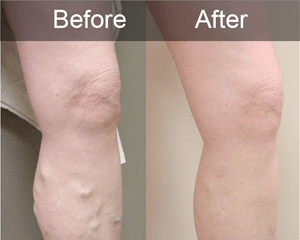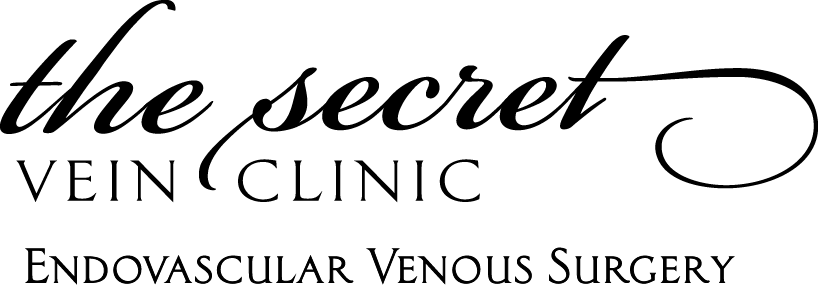Varicose veins are large, bulging, and painful veins which typically form on the feet and legs. Although most varicose veins are harmless, they can cause symptoms such as pain, heaviness, throbbing, and pressure that decrease the patient’s quality of life. If left untreated, varicose veins can cause ulcers, blood clots, and bleeding when veins protruding from the leg are irritated.
Symptoms aside, varicose veins are also unsightly and uncomfortable. You shouldn’t have to live feeling embarrassed about your varicose veins. Fortunately, varicose vein treatments do exist for eliminating these uncomfortable veins. The treatment will depend on the causes of your varicose veins. In many cases, varicose veins are caused by underlying circulation problems, such as venous insufficiency, that must be corrected with surgical intervention before cosmetic treatments are performed. If the underlying issue is not corrected, then cosmetic treatments are rarely effective. The most common surgical procedure for correcting venous insufficiency is known as an ablation, where a catheter is inserted into the leg and used to collapse the diseased vein, forcing blood to flow through nearby healthy veins. For cosmetic treatments, the surgeon will either perform sclerotherapy or a laser treatment, depending on the size and position of the veins.
Laser Vein Treatment

The laser vein treatment usually takes less than one hour to complete. There may be some minor pain, so your doctor might administer a local anesthetic. Once the treatment has been administered, the area might feel painful and uncomfortable. Many physicians recommend over-the-counter pain medicine like ibuprofen to relieve your discomfort.
For one to two weeks after the procedure, your doctor might recommend that you refrain from doing lower body cardio such as running, biking, or swimming. Walking, however, is encouraged and your doctor might recommend that you walk for a minimum of 1 to 2 hours per day on a flat surface. That way, you will promote lower extremity circulation and aid your body in recovery. Periods of inactivity increase your risk of developing a blood clot.
Sclerotherapy
Sclerotherapy is effective for varicose veins and large spider veins in the absence of an underlying medical condition. The good news is that this treatment is only minimally invasive. The doctor will make several small injections of a chemical sclerosant solution into your veins. The solution will collapse the veins so that they are gone completely. Most patients experience minimal pain and return to work or school the same day. After the procedure, many doctors will recommend following the same exercise restrictions as listed about.
RFA
A radiofrequency ablation can correct underlying medical conditions, such as venous insufficiency, that cause varicose veins. If the underlying condition isn’t treated, than cosmetic solutions are less effective as the diseased veins still suffer from blood reflux in the legs. Most RFAs last less than an hour, and your total time at the doctor’s office should be less than two hours. Most doctors administer a local anesthetic, and some dispense oral pain relievers depending to help minimize discomfort during the procedure. In any case, make sure to discuss all of your options with your doctor.

